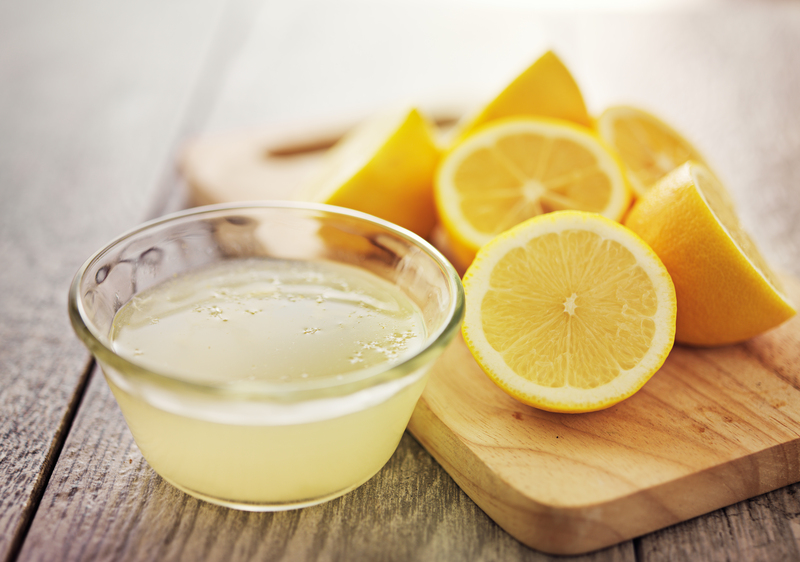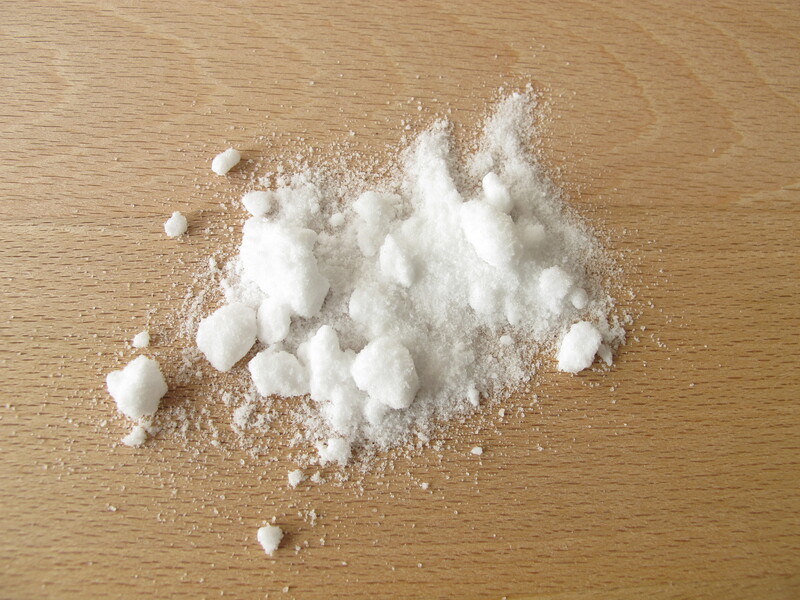Step-by-Step Guide to a Mold-Free Bathroom
Posted on 17/08/2025
Step-by-Step Guide to a Mold-Free Bathroom
A mold-free bathroom not only looks clean and fresh but also safeguards the health of everyone in the household. Mold and mildew thrive in damp and humid environments, making bathrooms a frequent target for unsightly and potentially hazardous mold growth. This comprehensive, easy-to-follow guide will show you how to prevent bathroom mold, maintain a healthy environment, and tackle any mold issues that arise.
Understanding Why Mold Grows in Bathrooms
Before we dive into prevention and removal, it's important to understand why bathrooms are particularly susceptible to mold.
- High humidity: Steam from showers and baths creates an ongoing damp atmosphere.
- Poor ventilation: Many bathrooms lack proper airflow, allowing moisture to linger.
- Organic materials: Grout, drywall, flooring, and even soap scum serve as food sources for mold.
- Frequent condensation: Cold surfaces in bathrooms, such as mirrors, windows, and pipes, often collect moisture.

Supplies and Tools You'll Need
Before starting the battle for a mold-free bathroom, gather these supplies:
- Rubber gloves and protective mask
- Scrub brush or old toothbrush
- Spray bottle
- White vinegar or hydrogen peroxide
- Baking soda
- Non-ammonia soap or bathroom cleaner
- Microfiber cloths or sponges
- Grout sealer (optional for prevention)
- Caulking gun and mildew-resistant caulk (for repairs)
Step 1: Inspect for Mold and Moisture Problems
Start by thoroughly examining your bathroom for any mold or mildew. Check grout lines, caulk, under sinks, behind toilets, and any hidden/covered areas. Look for patches of black, green, or white fuzzy growth and sniff for a musty odor (a key sign of hidden mold).
Common spots for bathroom mold:
- Tile grout
- Caulking around tubs and sinks
- Ceilings and walls near the shower
- Windowsills
- Exhaust fans and vents
- Underneath sink cabinets
Identify the extent of the problem: if the area is over 10 square feet, consider consulting a professional, as large infestations may require special handling and disposal.
Step 2: Address the Source of Moisture
Eliminating moisture sources is the most crucial part of maintaining a bathroom free of mold. Without ongoing dampness, mold cannot thrive.
Boost Ventilation
- Install or upgrade your exhaust fan.
- Always run the fan during and for at least 30 minutes after every shower or bath.
- If possible, open a window to increase airflow and reduce humidity.
- Keep bathroom doors open between uses to promote air circulation.
Control Humidity
- Use a dehumidifier in very humid environments.
- Quickly repair any leaks in sinks, pipes, or toilets.
- Regularly check and replace cracked caulk or grout where water can seep through.
Monitoring humidity with a simple hygrometer can help keep levels below 50% -- the threshold for mold growth.
Step 3: Deep Clean and Remove Existing Mold
If you've noticed any mold patches, act quickly! Here's how to safely and thoroughly clean mold from your bathroom:
Safety First
- Open windows and doors for ventilation.
- Wear gloves and a mask to avoid contact with spores.
Natural Mold Cleaning Solutions
Many effective bathroom mold removers are non-toxic and eco-friendly:
- White vinegar: Fill a spray bottle and saturate the affected area. Let sit for 1 hour, then scrub.
- Baking soda: Make a thick paste with water, apply to moldy spots, and scrub with a brush.
- Hydrogen peroxide (3%): Spray directly on mold, wait 10 minutes, then scrub and rinse.
For Stubborn Mold
- Use a commercial bathroom mold cleaner or diluted bleach (1 part bleach to 10 parts water). Never mix vinegar with bleach or ammonia.
- Scrub thoroughly and rinse with clean water.
- Pat dry all surfaces after cleaning to prevent new growth.
Dispose Responsibly
Throw away any cleaning sponges, rags, or disposable masks to avoid spreading spores.
Step 4: Repair and Seal Vulnerable Areas
Your bathroom is most at risk for mold in areas where water can seep behind surfaces. Addressing vulnerabilities will minimize future risk:
- Scrape away cracked or peeling caulk and reapply with mildew-resistant caulk to prevent water leaks.
- Seal grout lines annually with a grout sealer to block moisture entry.
- Repair leaking pipes, faucets, or loose fixtures as soon as they're discovered.
Check under sinks, behind toilets, and in corners for recurring dampness after repairs are done.
Step 5: Implement a Mold-Free Bathroom Maintenance Routine
Avoid mold returning by sticking to a regular bathroom cleaning and moisture management schedule.
Daily Habits
- Run the exhaust fan or open a window every time you bathe or shower.
- Wipe down wet surfaces: After each use, squeegee shower walls and glass, and wipe counters dry.
- Hang towels and bath mats to air-dry fully between uses.
Weekly Tasks
- Scrub tiles, grout, and caulk lines with a mild bathroom cleaner or vinegar solution.
- Clean drains to remove hair and build-up that can trap moisture.
- Wash shower curtains or liners in hot water; replace plastic liners if they begin to spot with mold.
Monthly or Seasonal Checks
- Inspect under sinks, around toilets, and behind cabinets for moisture or leaks.
- Wash exhaust fan grills and vents to ensure steady airflow.
- Re-seal grout and re-caulk as needed.
- Declutter to eliminate places for mold to hide and grow.
Step 6: Mold Prevention Upgrades and Proactive Strategies
Make your bathroom even more mold resistant with these advanced solutions:
- Install a more powerful exhaust fan with a timer or humidity-sensing switch.
- Switch to mold-resistant paint for walls and ceilings (satin or semi-gloss are best for bathrooms).
- Opt for solid-surface shower surrounds or wall panels instead of tiled bottoms, minimizing grout lines.
- Upgrade to mildew-resistant shower curtains and bathmats.
- Consider a water softener to reduce soap scum -- a favorite food source for mold.
Choose bathroom materials and finishes specifically labeled as "mold-resistant," especially in high-humidity climates.
Step 7: Educate Household Members
Your hard work pays off best when everyone in the home knows how to maintain a mold-free bathroom. Remind family or roommates to:
- Use fans and open doors after showers.
- Hang towels, don't leave them in piles.
- Report leaks or drips right away.
- Keep personal care products organized and dry.
FAQ: Mold-Free Bathroom Solutions
Can I permanently prevent mold in my bathroom?
With diligent prevention, cleaning, and moisture control, you can dramatically reduce mold risk. However, absolute 100% prevention is nearly impossible in damp environments -- so stay vigilant and address problems early!
Is bleach the best way to remove mold in a bathroom?
Bleach is popular for surface disinfection, but vinegar or hydrogen peroxide are safer and just as effective for small mold spots. Avoid mixing products for your safety and the best results.
How do I get rid of mold smell in my bathroom?
- Remove all visible mold and thoroughly clean the area.
- Run fans to air out the space and dry thoroughly.
- Absorb lingering odors with baking soda or activated charcoal.
- If odor persists, it may signal hidden mold -- investigate further.
Does waterproof paint stop bathroom mold?
Waterproof paint helps by repelling surface moisture, but it isn't a substitute for proper ventilation and cleaning. Always fix leaks and reduce humidity for best results.

Conclusion: Enjoy a Healthier, Cleaner Mold-Free Bathroom
A mold-free bathroom is not only more attractive and comfortable, but also much safer for your health. By following this comprehensive, step-by-step guide -- from inspection and cleaning to repairs, upgrades, and regular maintenance -- you can prevent unsightly mold growth and keep your bathroom sparkling clean all year round. Prioritize airflow, moisture control, and routine cleaning, and you'll enjoy a fresh, inviting, and truly mold-free bathroom sanctuary every day.
Share Your Tips!
If you have more advice or unique methods for keeping a bathroom mold-free, share your experience in the comments below. Together, we can create cleaner, healthier homes for everyone!



